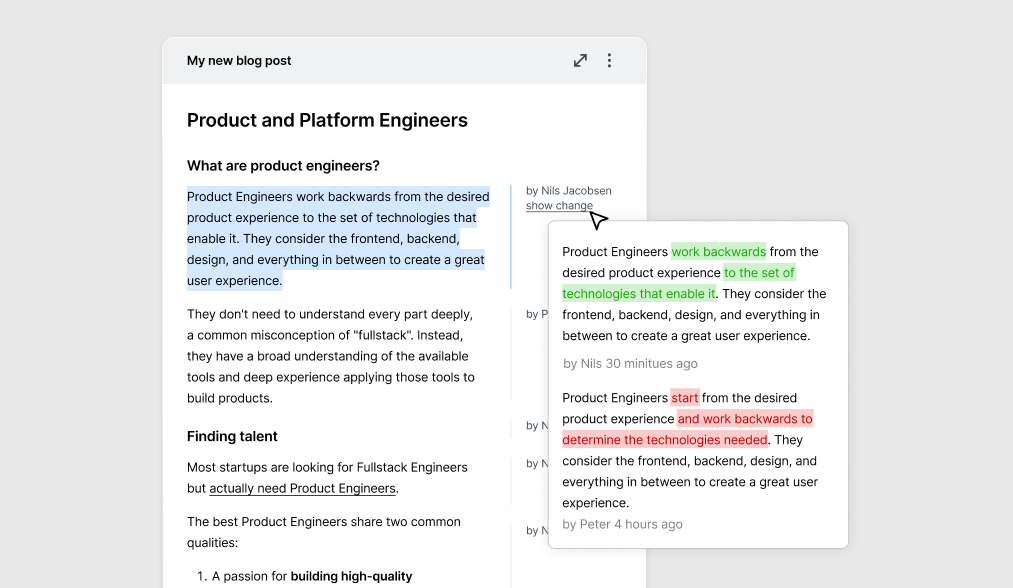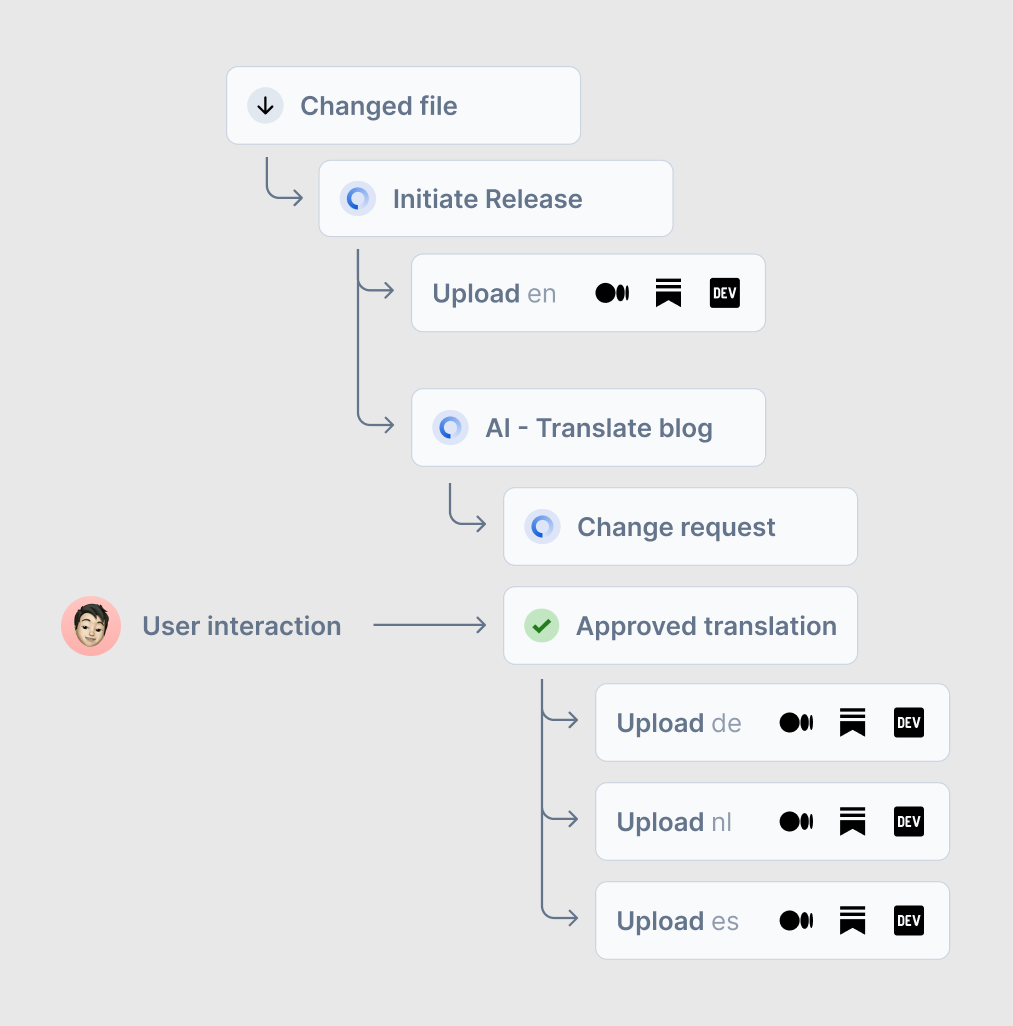Collaborative Markdown with Lix Change Control
This case study explores how Lix Change Control for Markdown improves collaborative writing with seamless collaboration, precise version tracking, and robust review workflows
1. Intro
Collaborating with Markdown files is painful. What if lix had a Markdown plugin and someone built a Markdown editor that uses lix change control features?
In this post, I'll explain the benefits of using a Markdown editor based on the lix change control system and how it differs from a standard text editor, using collaborative blog writing as an example. If you are new to lix, I recommend checking out our website for more context.
TL;DR
lix provides change control for different file formats. Writing a lix plugin for Markdown files enables collaboration, review flows, automation pipelines, and more change control features.
2. How does it work
When an app uses [lix](https://lix.opral.com/) under the hood, it allows storing, tracking, querying, and reviewing changes in different file formats.
In this scenario, the lix SDK is used along with a markdown plugin, allowing it to comprehend .md files. lix doesn't see Markdown as just a text document; it understands the different text nodes and nestings semantically, which helps it merge changes correctly.
3. Workflow
Collaborative writing involves multiple contributors making changes and suggestions. Here's how our Markdown editor, powered by lix, handles this:
Make Your Changes: Work on your file independently. Lix tracks all the modifications you make, capturing each change at the text node level and saving the changes at the file level for precise control and traceability.
Submit a Change Request: Once you're happy with your changes, submit a change request. This will sync your version, containing the new state of the file and its changes, to a remote host. Alternatively, you can send the file over manually.
4. Review
lix has the capability to display the differences from multiple change requests and to merge Markdown files, which is known as review. As the reviewer, you have the authority to approve or reject the changes.
5. History
lix provides access to a text node's history, allowing you to see who made changes and roll back if necessary, ensuring full traceability and recovery.
6. Possible automation use cases
Text Validation — lix allows you to add custom validation rules, which are checked after each modification. This ensures the highest quality of your content.
Release automation — With the ability to track changes in the main document, you can initiate a re-release when your document is updated.
Multilingual blog — Similar to release automation, you can build a pipeline that allows you to release the blog in different languages using a LLM system. Whenever a change is made to the main document, an AI agent reevaluates the current copies in other languages and requests changes if necessary. You still have full control and don't have to rely solely on the AI's accuracy. If you don't speak the language, you can configure your pipeline to notify a native speaker to review the content.
7. Conclusion
Building an editor for Markdown files in lix makes sense. Full traceability and recovery are crucial in every writer's workflow and can be a pain when unavailable. Configuring document pipelines that can react to changes gives the workflow powerful capabilities. As an added bonus, you can use the entire system offline without drawbacks by simply downloading the project file and sharing it with others.
Read more:










